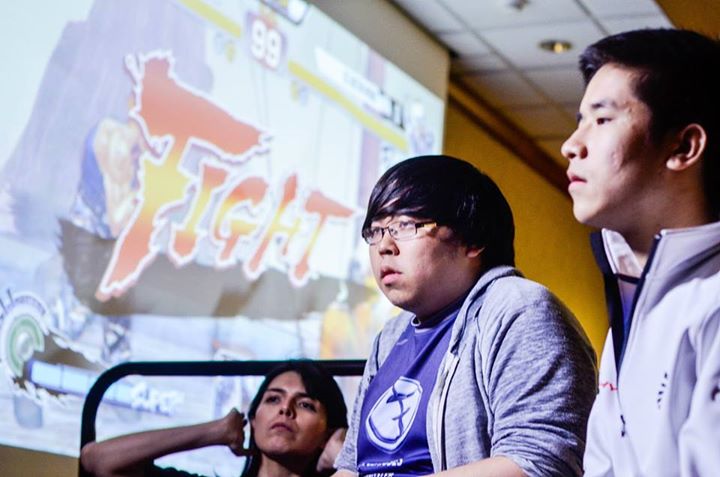I felt like death.
It’s 9 a.m. in Sacramento, Calif., and it was way too early to be awake. I kept my eyes closed to the sun to keep my memories of sleep intact. My first night of the Northern California Regionals (NCR), one of the biggest fighting game tournaments in the country, was chock full of activity. In addition to driving up to Sacramento, I met up with friends from around the world and ate with whomever was available. With only four hours of sleep, the Starbucks drink in my hand was the most important thing in the world. I came here to compete, but I also wanted to find out what the tournament favorites had to say about preparation, mental mindsets, and the entire fighting game community’s growth.
For fighting gamers, the most overlooked activity during tournament time is sleep — even for amateurs like myself, you never have enough for proper rest. The list of activities to do at a major tournament after the daytime activities may look like this:
- Playing matches for stakes.
- Exploring the venue or the city around it.
- Finding food or a bar.
- Playing casuals or practicing for the upcoming matches.
- Sleep?
NCR is a California, and fighting game, tradition. It started in 2001 at the Sunnyvale Golfland arcade with 64 combatants. Fast-forward to this year’s version in Sacramento — the player pool has ballooned to over 650 competitors, local and international players.
Major tournaments are hosted in ballrooms, instead of arcades, with a schedule that covers the entire weekend (Friday to Sunday). Many of the long-established majors are a part of the Capcom Pro Tour (CPT), a tournament season that would eventually lead to a final playoff between 16 qualified fighting game players for a prize pool of $500,000, the largest ever for fighting games.
Getting started
A line of arcade fight stick-carrying players draped the entrance of the ballroom labeled “NorCal Regionals, Kineda.” This year’s NCR was at a Hilton in the middle of downtown Sacramento. I could hear a dull roar of cheers from behind the opened doors of the ballroom as people registered and received their armband for entry.
To the left of the ballroom, organizers stationed more than 20 monitors for “pool” play (the group stage that sets up the final bracket for any given tournament). Toward the right of the room was a large projector that showed off the “stream” matches selected by the tournament pool organizers. In the middle of the ballroom were three booth vendors that sold products such as fightsticks, bead sprites, and parts. Despite the large amount of games played (a total of five main events), the featured tournament was Ultra Street Fighter 4 — it’s also the only fighting game I participated in that weekend.
USF4 was the featured game because the CPT was for just that particular game. You could only earn the prize pool, prestige, and honor of being the best street fighter by performing well in the Capcom’s biggest game.
Into the minds of the best
Last year’s NCR champion was Team Evil Geniuses’ Eduardo “PR Rog” Perez-Frangie. He’s one of the best players in the United States, and boasts one of the best, if not the best, Balrogs (a boxer character) in USF4. He’s known not only for his exciting and aggressive play but also for a fundamentally strong ground and neutral game (his spacing of “pokes” and normal moves are on par with the best in the world).
As PR Rog sat down at the register’s table, he cracked a smile and joked with the tournament staffers. He showed no notable nerves or unease in his grin this morning, a good sign for the defending champion.
“I’ve been practicing in a different way,” Perez-Frangie told me. “I spend most of my time studying. In the long-term, it will benefit me more. I don’t think I have additional pressure [as the defending champion], it’s a different game and a learning process.”
When PR Rog won the NCR last year, the version of Street Fighter was different — it used the “Arcade Edition: 2012.” Now, it’s on USF4 and the competition featured several more international players than years’ past. He mentioned that the tournament was a learning process simply because it was early in the fighting game season and despite wanting to repeat, the player pool for this year’s NCR would be stronger than ever.
“A lot of players are better now — newcomers and aggressive players are stronger,” Perez-Frangie said. “The Japanese players are practicing more than anyone. It will be a wake-up call to everyone.”
Right on cue, I found one of the favorites to win the entire tournament, Ryota “Kazunoko” Inoue. He had finished with his match on stream in decisive fashion, and with the help of my translator friend, he explained to me why the Japanese are traveling en masse this year.
“Before the announcement of the CPT, you had to get top-3 for a prize. Since the announcement of more money, there is less pressure to always do well, so Japanese players will compete more often than before,” Inoue said. “Because of the number of tournaments, I won’t be satisfied even if I win.”
His words implied that the threat of international players will continue. Kazunoko posed as one of the biggest contenders for the tournament’s top place. He’s one of the most aggressive players in the world and used a character that fit the style well, Yun. He’s regarded as one of the five best players in the world.
Because of his aggressive style, he thrives in short sets of games. Players needed to adjust to his speed rather than the other way around.
“Aggression is best for a tournament, but it is just the current trend,” Inoue said. “It may be one of the better options, but players that developed a defensive and well-rounded style is the next step.”



